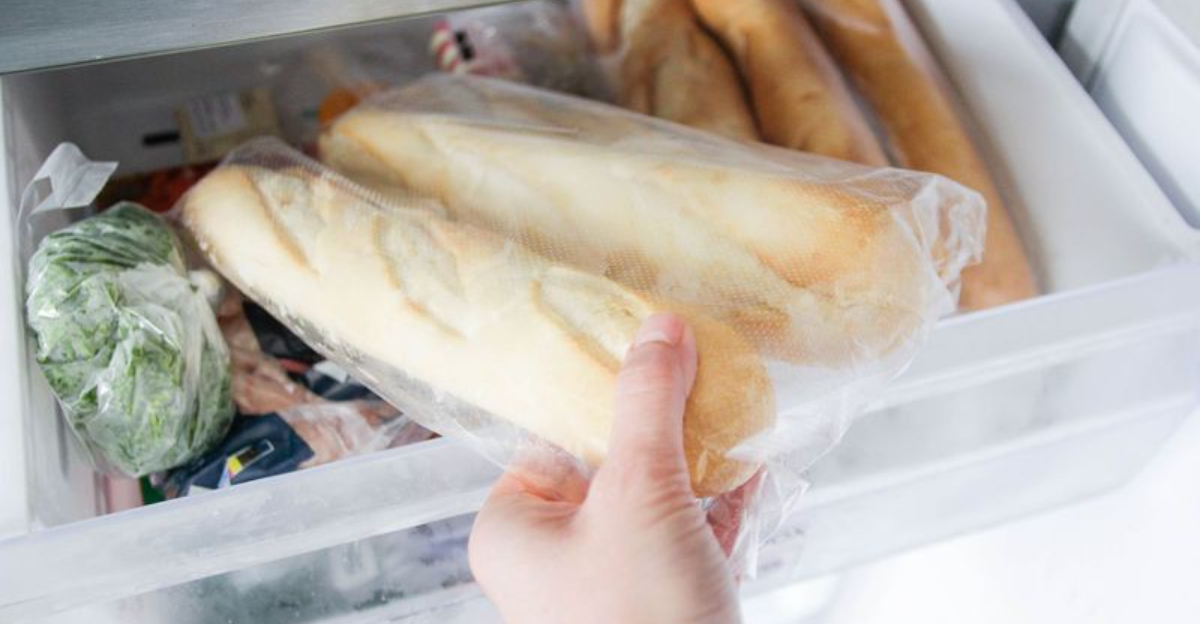6 Smart Ways To Keep Your Bread Soft, Fresh, And Delicious

There’s nothing quite like the smell of fresh bread wafting through your kitchen. But that heavenly loaf can quickly turn into a rock-hard disappointment without proper storage.
No matter if you’re a sourdough enthusiast or simply enjoy a good sandwich, keeping your bread soft and tasty is a daily challenge for many home cooks.
So let’s explore some practical ways to extend your bread’s life and maintain that just-baked texture.
1. Store in Paper, Not Plastic
Paper bags allow bread to breathe while retaining just enough moisture. The porous nature of paper prevents the crust from becoming soggy, a common problem with plastic storage.
I learned this trick from my grandmother who always wrapped her homemade rye in brown paper. For store-bought bread, keep it in its original paper packaging or transfer to a paper bag.
This method works best for crusty artisan loaves that you plan to consume within a day or two.
2. Freeze Slices Individually
Freezing bread stops the staling process in its tracks. By freezing individual slices rather than the whole loaf, you can grab exactly what you need without thawing everything.
Place parchment paper between slices before freezing to prevent them from sticking together. Store in a freezer-safe container or bag with the air pressed out.
When ready to eat, toast the frozen slice directly or let it thaw at room temperature for about 10 minutes.
3. Invest in a Quality Bread Box
Bread boxes help balance humidity, reducing airflow to slow drying without sealing in excess moisture. The enclosed space prevents bread from drying out while still allowing some air circulation, but it doesn’t prevent mold outright (especially in warm, humid kitchens).
My vintage metal bread box has saved countless loaves from premature staleness. Last summer, during a particularly humid week, my counter-stored bread grew fuzzy in days while the bread box loaf stayed perfect.
Look for boxes with ventilation holes or adjustable vents for customized freshness control.
4. Revive Stale Bread with Water
Hardened bread isn’t a lost cause. Running water over the crust or wrapping in a damp towel before heating can restore moisture and softness to bread that seems past its prime.
For whole loaves, sprinkle water on the crust and bake at 350°F for 5-10 minutes. For slices, dampen them slightly before toasting.
The steam created during heating penetrates the bread structure, temporarily reversing the staling process and giving your bread a second life.
5. Cut from the Center
The exposed surface of bread is where moisture escapes fastest. By cutting from the middle instead of the end, you create two cut surfaces that can be pressed together to form a moisture seal.
After slicing what you need, push the two halves together and store with the cut sides facing each other. This technique minimizes the exposed area.
Secure with a bread clip or rubber band to keep the halves pressed together and preserve freshness longer.
6. Store Bread in the Refrigerator’s Crisper Drawer
While refrigeration generally speeds up staling, the crisper drawer offers a microclimate that can work for bread in hot, humid conditions. The controlled humidity can slow mold compared with a warm counter, but expect faster staling, so use this only short-term.
Growing up in Florida, my mom always kept our bread in the crisper during summer. Place bread in a paper bag first, then into the drawer away from fruits and vegetables.
This method works best when your alternative is having bread spoil from heat and humidity.
